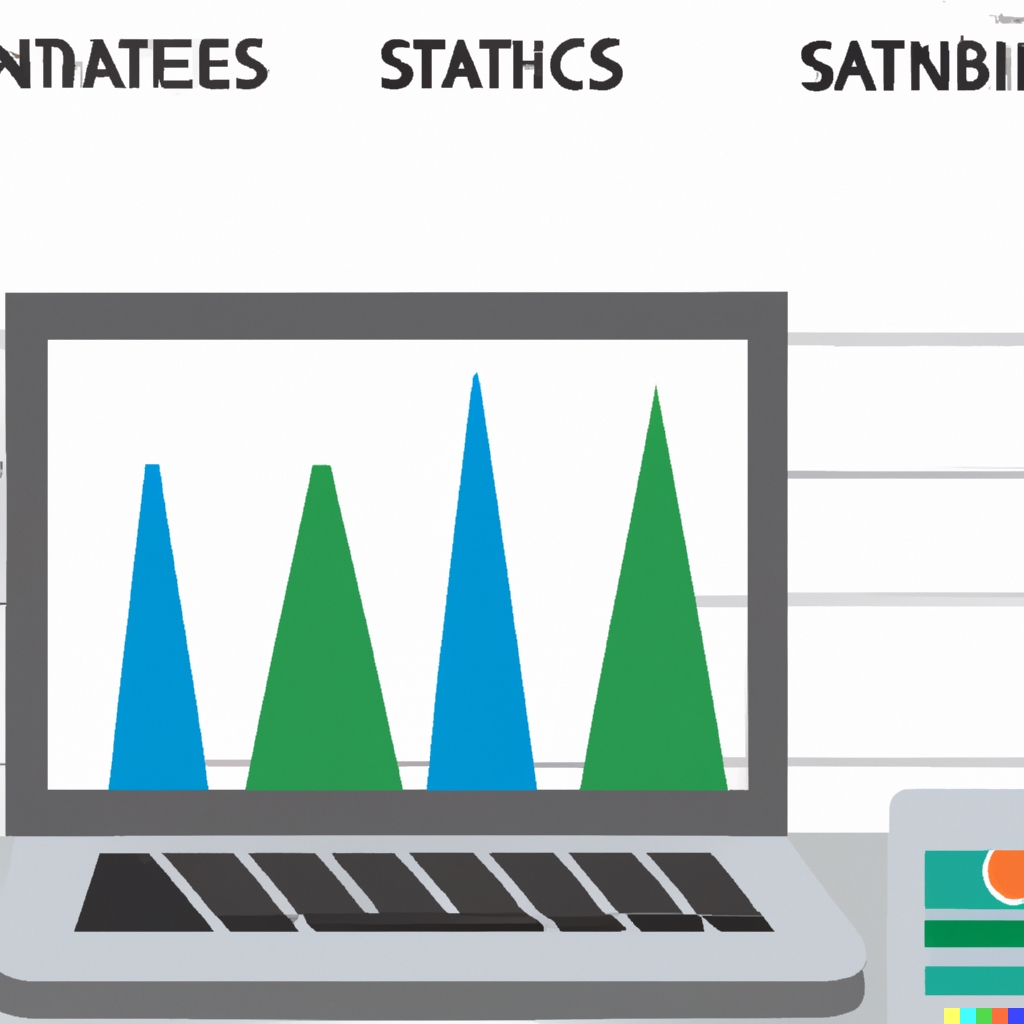Enhancing website performance with CDNs for image optimization is crucial for a better user experience. Content Delivery Networks (CDNs) allow websites to deliver images faster and more efficiently, reducing load times significantly. At Metrics Rule, we understand how important optimized images are for web developers and marketers alike in increasing engagement and retention. By implementing effective CDN strategies, you can improve your site’s speed and boost SEO scores, ensuring that your website stands out and performs well.
Introduction to Content Delivery Networks and Their Functionality
A Content Delivery Network (CDN) is a system designed to efficiently deliver content to users. CDNs work by distributing copies of website resources across various geographical locations, ensuring that users access data from the nearest server. This reduces load times and enhances website performance significantly. For e-commerce websites, blogs, and other digital platforms, employing CDNs for image optimization plays a crucial role in speeding up image delivery and improving overall site reliability. By utilizing a CDN, websites can handle increased traffic effectively while ensuring great performance and user experience.
How CDNs Optimize Image Delivery on Websites
CDNs utilize a technique called caching, which stores images on multiple servers worldwide. When a user accesses a site, the CDN delivers images from the nearest server, enhancing website performance and reducing latency. This process is essential for e-commerce sites needing fast loading times to improve conversions and user engagement. Moreover, top CDNs often include advanced features such as automatic image compression and responsive image delivery, ensuring users receive the best quality without sacrificing performance. By implementing these strategies, websites can efficiently manage their resources while providing an excellent experience for their visitors.
Impact of Image Optimization on Web Page Loading Speed
Optimized images significantly enhance web page loading speed by reducing file sizes without sacrificing quality. Techniques such as JPEG and PNG compression help lower image weight, which expedites loading times. When images load faster, user experience improves, as visitors spend less time waiting and can navigate your site seamlessly. Effective image optimization strategies include using tools like TinyPNG or ImageOptim, which compress images efficiently. Implementing these techniques often results in noticeable performance improvement that can enhance site engagement and conversions.
Effective Image Compression Techniques for Faster Loading Times
Using image compression techniques like lossless and lossy compression is essential for ensuring fast website loading times. Lossless compression retains all image data, making it perfect for graphics and logos, while lossy compression optimizes images by slightly reducing quality—ideal for photographs. Many web developers and e-commerce professionals use formats like WebP and AVIF, as they deliver high-quality images at reduced file sizes. Tools such as Kraken.io and Google’s PageSpeed Insights can assist in testing and refining these techniques, enabling you to achieve the best results for your site’s performance and ultimately driving SEO success.

Key Advantages of Implementing a Content Delivery Network
Using a Content Delivery Network (CDN) for image optimization provides several key benefits. Firstly, a CDN significantly reduces load times by delivering images from the nearest server to the user. This enhances the user experience and improves site engagement. Secondly, by caching images and other static resources, a CDN decreases bandwidth consumption, allowing for a more efficient use of server resources. This efficiency is essential, especially on popular websites that experience high traffic volumes. Furthermore, CDNs enable better traffic management, allowing websites to handle spikes in visitors without experiencing slowdowns or crashes.
Detailed Benefits of Bandwidth Efficiency and Reduced Load Times
Bandwidth efficiency and reduced load times are crucial for ensuring optimal website performance. CDNs compress images and files, drastically lowering the amount of data transferred during each visit. For example, users have reported up to a 50% reduction in load times when switching to a CDN. This compression, combined with smart routing algorithms, allows CDNs to optimize delivery paths and provide users with images instantly. E-commerce sites can particularly benefit from this because faster load times result in higher conversion rates. Therefore, integrating a CDN not only enhances performance but also improves reliability and user satisfaction in terms of speed and efficiency.
Key Statistical Insights into Web Performance and Image Delivery
- Over 60% of users expect websites to load in three seconds or less.
- Content Delivery Networks can improve loading times by up to 50%.
- Images can account for over 70% of your website’s total weight.
- Using CDNs reduces web traffic by caching images efficiently.
- Sites using CDNs often experience a decrease in bounce rates by up to 25%.
- Mobile users benefit from CDNs, gaining loading speeds around 30% faster.
- Optimized images through CDNs can improve SEO rankings significantly.

Effective Image Optimization Techniques for the Web
Image optimization involves several essential techniques that significantly boost website performance. Users should understand the various image compression methods, including lossless and lossy compression. Lossy compression reduces file size by removing some data, while lossless compression keeps all image data intact. Resizing images is also crucial; images should be scaled down to the specific display size they will occupy on the website. Additionally, selecting the right format—like JPEG for photographs and PNG for graphics—enhances loading efficiency. The ideal image size for web use is generally around 100 to 200 kilobytes to ensure fast loading without sacrificing quality.
Understanding Image Formats and Their Impact
Choosing the correct image format is vital for web performance and user experience. JPEG is best for photographic content due to its efficient lossy compression, providing a great balance between quality and size. PNG is ideal for images that require transparency or are already low in color variance. The WebP format offers superior compression capabilities compared to both JPEG and PNG, making it a strong option for fast-loading images. Understanding and selecting suitable formats helps websites in Vancouver and beyond optimize their loading times. This ensures a better browsing experience while improving SEO through enhanced performance metrics.

Steps to Successfully Integrate a CDN for Image Delivery
To successfully integrate a CDN for optimized image delivery, follow these key steps: first, choose a reliable CDN provider that meets your image performance needs. Look for features such as fast data transfer, global network coverage, and strong security measures. Next, configure your CDN to cache images effectively, ensuring that it fetches the images from your origin server. After that, update your website’s URLs to point to the CDN-hosted images. Regularly test the CDN’s performance to observe its impact on website speed and reliability. Finally, review analytics data to analyze load times and user engagement metrics.
Key Features of a Quality CDN for Image Performance
When selecting a CDN, consider vital features that enhance image performance. A great CDN should include a robust caching mechanism, allowing high-efficiency delivery across various devices. Look for CDNs that provide optimization tools like automatic image resizing, format conversion, and compression techniques. Additionally, a quality CDN enhances reliability with features like redundant servers and real-time monitoring, ensuring that your images load quickly and efficiently. Such tools are essential for e-commerce sites to improve user experience and boost conversion rates. Evaluating these features through expert reviews and performance data will help ensure you select the best CDN for your technical setup.
Advantages of Utilizing Distributed Networks for Image Delivery
- Users enjoy quicker loading times, leading to better overall experience.
- Content Delivery Networks improve image optimization automatically.
- Websites see enhanced performance during high traffic events.
- CDNs reduce server load, freeing up resources for other tasks.
- Improved security comes with many CDNs, protecting your images.
- Visitors can access cached content globally, enhancing usability.
- Efficient image delivery increases conversion rates significantly.

Best Practices for Image Management to Ensure Optimal Performance
Effective image management includes several essential practices. First, utilize lazy loading to load images only when they enter the viewport, which enhances site performance. Implementing responsive image techniques allows images to adjust in size according to device screens, providing a great user experience without sacrificing quality. Using appropriate file naming conventions ensures search engines can index your images effectively, improving your SEO. Optimized image management can enhance website loading speed significantly, often reducing load times by 25% to 50%.
Key Techniques for Lazy Loading and Responsive Images
Lazy loading and responsive images are two key techniques for improving image management. Lazy loading delays the loading of images until users scroll to them, which reduces initial page load time. This solution improves reliability and efficiency because it minimizes the required data transfer at first. Meanwhile, responsive images ensure that the correct image size is delivered based on the user’s device, enhancing visual experiences on both desktop and mobile. Together, these techniques can substantially enhance website performance, providing an effortless browsing experience while ensuring your content is efficiently indexed by search engines.
Tools and Metrics for Measuring Image Optimization Success
To effectively gauge the impact of using CDNs for image optimization, it’s essential to monitor key image performance metrics. These include page load times, image loading speeds, and overall site speed improvements. Tools like Google PageSpeed Insights, GTmetrix, and Pingdom provide valuable data on how your images are performing after CDN implementation. You can also explore analytics tools such as Google Analytics to monitor traffic and user engagement around images. When considering these tools, focus on load time reduction since studies reveal that using a CDN can lead to reductions of up to 50% in load times, enhancing user experience and SEO outcomes.
Key Metrics for Tracking Image Performance
Understanding the key metrics for tracking image performance is crucial for optimizing your website’s efficiency. Important metrics include First Contentful Paint (FCP), which measures how quickly your site’s content starts loading, and Time to Interactive (TTI), reflecting how long it takes for users to interact with your site fully. These metrics help you assess CDN effectiveness in delivering images. Moreover, you should track bounce rates and conversion rates, as these reveal user engagement levels post-implementation. Utilizing CDN analysis tools will enable you to continuously enhance your image optimization strategies and improve overall site performance.
Notable Providers and Their Impact on Website Performance
- Akamai offers excellent global coverage but can be pricey for small sites.
- Cloudflare provides a free tier but lacks some advanced features.
- Amazon CloudFront excels in scalability but requires technical setup.
- Fastly delivers real-time updates, ideal for dynamic content.
- KeyCDN is cost-effective, great for startups, but may have limited features.
- StackPath combines security and performance enhancements well.
- Google Cloud CDN offers seamless integration with other Google services.
Navigating Challenges in CDN Implementation for Image Delivery
When implementing CDNs for image delivery, users often encounter hurdles such as configuration complexity, cost management, and performance inconsistencies. Configuration can be challenging, as users may struggle to properly set up the CDN to enhance performance. Additionally, costs can become an obstacle if a user does not thoroughly compare numerous reliable CDN providers that suit their specific needs. Performance inconsistencies could result from not optimizing images correctly or selecting a CDN that lacks efficient image handling features. To address these issues, users should conduct comprehensive research on CDN functionalities, run performance tests, and regularly review analytics data to ensure the best results.
Essential Strategies for Overcoming CDN Implementation Issues
Overcoming CDN implementation issues involves a structured approach. Start by conducting a detailed comparison of popular CDN providers, focusing on their image optimization features. This research will help you identify the best fits for your e-commerce needs. Testing performance through structured methods will provide insights about load speed improvements. Cases show that users can see average reductions of up to 50% in page load times when adequately utilizing a CDN for image delivery. Furthermore, ensure to review your CDN settings periodically and gather user feedback on experience to steadily enhance the deployment process.
